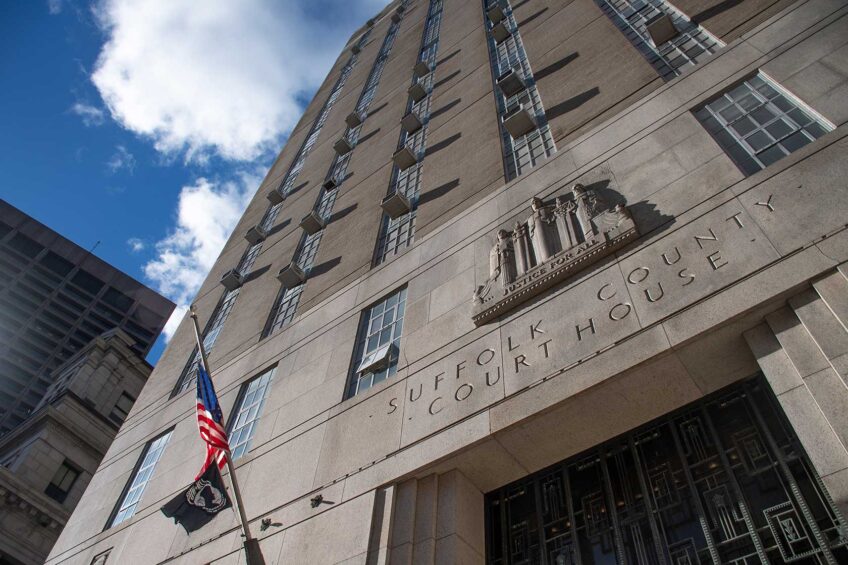The tragic shooting death of Florida teenager Trayvon Martin has sparked a nationwide debate about why black men are profiled as criminals even though they’re not. It should also spark a debate about how to stop that sort of profiling here in Massachusetts.
On February 26, George Zimmerman, a self-styled neighborhood watchman, killed Martin in an Orlando suburb. Zimmerman pursued Martin after calling the police about a suspicious black teenager in his neighborhood, and, after a confrontation, shot him dead.
In his call with police just before killing Martin, Zimmerman made Martin seem deeply suspicious. Zimmerman said that the teen was wearing a dark hoodie and carrying something near his waist. The teen, said Zimmerman, was “up to no good.”
But Martin, an A-B student, was not up to no good. He was going to 7-Eleven.
The story of Martin’s death has plenty of culprits. Foremost is Zimmerman, whose claim of self-defense now seems almost absurd. Chillingly, Martin’s girlfriend has reported that, moments before being shot, Martin told her via cell phone that he was being followed. The next culprit is the local police department, which blithely accepted Zimmerman’s account. Another is Florida’s “Stand Your Ground” law, which allows nearly any shooter to claim self-defense — particularly if the only other eyewitness to the shooting is dead.
But Martin’s death is not just a story about a rogue citizen, an obtuse police force and a terrible law. In fact, seeing it only in those terms would risk overlooking what can be done in the future to protect people like Martin.
For starters, Zimmerman might have sincerely believed, at least at first, that Martin was suspicious. Zimmerman’s call to the police focused on Martin’s dress and behavior — including Martin’s hand movements — not just Martin’s race. And Zimmerman himself is Latino.
What’s more, Zimmerman’s attempt to profile Martin was not novel. Black men, and certainly black teens, are routinely sized up by passersby. Sometimes those passersby are police officers who, unlike Zimmerman, can lawfully stop people they deem suspicious. So looking at the people stopped by police officers is perhaps the best way to understand whether professionals accurately predict who is “up to no good.”
Here in Boston, the police department collects data on these stops and, at the urging of the ACLU of Massachusetts, has pledged to release a report and the underlying data this summer. New York and Los Angeles, however, have already released data showing that the police often confront people for reasons much like Zimmerman’s reasons for confronting Martin. In New York, where the police stop thousands of pedestrians every year, half of those stops involve reports of “furtive movements.” Yet 90 percent of those stopped by the NYPD are innocent, and an astounding 87 percent are black or Latino.
At best, a black or Latino person stopped for wearing a hoodie and making a furtive movement is demeaned. That’s bad enough. But at worst, the person stopped is in grave danger. Heaven help him if, as Martin did, he puts his hands near his waist.
It might be tempting to blame outright racism, or at least racial profiling, for these statistics. But the truth is probably more complicated. Even if race affects an officer’s judgment about whether a black man is reaching for his wallet or a gun, the officer might believe that he is coldly assessing the facts. So protecting innocent people of color from dangerous confrontations with the police, or with armed citizens, isn’t as simple as decrying racism. It requires research and training on which behaviors are truly suspicious and which are not.
Every level of government needs this same evidence-based approach. On the day he was shot, for example, Martin was serving a five-day suspension from school for mere tardiness. It is unclear why his school thought that the street, rather than the classroom, was the best place for him.
That’s why the data being kept in Boston, New York and Los Angeles is so important. The police and the public need to know how often blacks and Latinos are stopped, for what reasons, and whether those stops are out of proportion to actual black and Latino crime. If so, then all of us who engage in profiling — citizens and officers alike — should rethink our guesses about who is suspicious.
Armed confrontations are too dangerous, and the need to catch real criminals is too important, to leave it all up to gut instinct.
Matthew R. Segal is legal director for the ACLU of Massachusetts.






